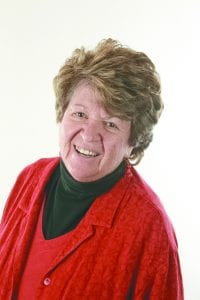In the heart of the medical field lies the nurturing presence of nurses.
As National Nurses Week unfolds from May 6 to 12, it’s time for communities everywhere to pause and reflect on the indispensable role nurses play in our health care ecosystem. Beyond being health care providers, nurses embody the essence of compassion, advocacy and expertise. They are heroes whose contributions resonate far beyond the confines of hospital walls.
They are not just caregivers; they are companions on the arduous journey of illness, offering solace and support when it’s needed most. In moments of vulnerability, it’s often the gentle reassurance of a nurse that brings comfort and hope to patients and their families. In this role, nurses serve as a beacon of empathy, providing not just medical care but also emotional sustenance.
Nurses serve as invaluable liaisons between patients, families and the broader health care team. They bridge the gap between complex medical jargon and everyday understanding, helping patients to make informed decisions about their health. Through clear communication and advocacy, nurses ensure that patients receive the personalized care they deserve. Whether it’s coordinating treatment plans, advocating for patient rights or providing vital education, nurses are the linchpins of effective health care delivery.
In the intricacy of individualized health care, nurses act as threads binding it all together. They possess a unique ability to see patients not merely as cases but as individuals with distinct needs and preferences. By tailoring care plans to suit each patient’s unique circumstances, nurses uphold the fundamental principle of patient-centered care.
“Nurses are the lifeline and lifeblood of our Stony Brook Medicine health care system,” said Carol Gomes, chief executive officer, Stony Brook University Hospital. “They provide exceptional and compassionate care for our patients. I’m so grateful and proud of their dedication and commitment to quality care. We celebrate our team during Nurses Week and applaud their talents every day of the year.”
As we honor National Nurses Week, let us not only acknowledge the tireless dedication and sacrifices of nurses but also advocate for the recognition and support they truly deserve. Let us continue to invest in their professional development, provide them with the resources they need to thrive and ensure their voices are heard in shaping health care policies. Because a health care system that truly prioritizes the well-being of its citizens is one that honors and uplifts its nursing workforce.

































